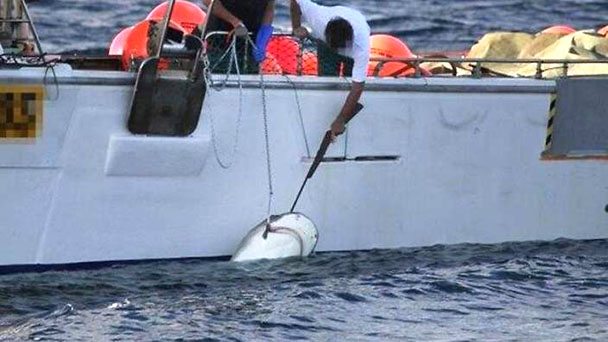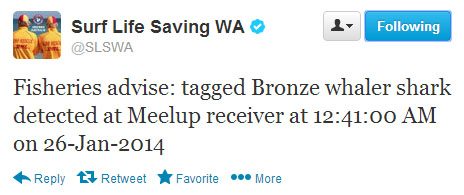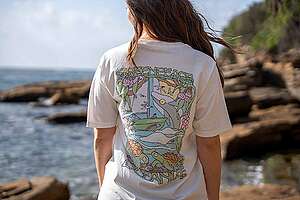This image was tweeted by The West Australian on Sunday 26 January 2014. It shows a three metre long, female tiger shark being caught with a hook and killed with a rifle. Reports say her body was then dumped at sea to fall lifelessly to the ocean floor.

This image was tweeted by The West Australian on Sunday 26 January 2014. It shows a three metre long, female tiger shark being caught with a hook and killed with a rifle. Reports say her body was then dumped at sea to fall lifelessly to the ocean floor.
In 2014, the West Australian government introduced a controversial bait-and-kill shark cull policy. After hundreds of thousands of passionate people in Australia and around the world spoke out about the cull – including scientists, conservationists, and many of you in the Greenpeace movement – the West Australian government withdrew this policy.
It’s no secret that Greenpeace loves sharks. As an apex predator they play an essential role in maintaining the balance of our marine ecosystems.
So what can be done to protect the lives of sharks and beachgoers? Take a look at these three scientific alternatives to a shark cull.
1. Educate beach-goers on the risks
The WA Department of Fisheries released its report (PDF 300kb) in 2012 about factors that could put swimmers at increased risk of being attacked by a shark. Here’s what they recommended:
- Stay out of the water if sharks have been sighted in the area.
- Stay close to shore (within 30m of the water’s edge).
- Don’t go in the water alone (stay in groups).
- Avoid water temperatures lower than 22C.
- Avoid water depths of greater than 5m when swimming or surfing.
- Avoid swimming after heavy storms, or in low light conditions (dusk and dawn).
- Avoid swimming if there are seals, dolphins, whales or baitfish nearby.
Getting this information across to beach swimmers could go a long way to keeping people safe.
2. Get more sharks on Twitter
It might sound crazy, but this brand new initiative could just work.
The newly installed Shark Monitoring System saw more than 330 sharks tagged with electronic devices set to send out a tweet whenever they swim within one kilometre of a beach.
The tweet appears on the official Twitter account of Surf Life Saving Western Australia (@SLSWA). It even includes details of the shark’s size, breed and approximate location – like this:
Dr Rory McAuley of the WA Department of Fisheries said the battery in the device could last up to 10 years, giving researchers an unprecedented look into shark movement patterns.
3. Do more and better scientific research
There’s still so much we don’t know about what causes sharks to attack humans. But the more we know, the more effective government interventions will be.
As Ryan Kempster, a shark biologist at the University of Western Australia said:
“We need to better understand exactly what causes sharks to bite people, what factors are responsible for them venturing closer to shore and more about their biology and life history.
“This kind of research helps us better understand where sharks will be and how they’re likely to behave. More of the same could help us develop strategies to coexist with these important apex predators and continue to enjoy the ocean safely.”
A shark cull doesn’t make sense
Nno one wants to see people needlessly hurt while having a swim. But there’s no ‘magic bullet’ to this complex and controversial issue. A hardline approach like a shark cull – according to the scientists – won’t do anyone or our oceans any favours today nor in the future.
A shark cull is a bad idea and the wrong answer to tragic deaths at sea. What do you think? Let us know in the comments!



